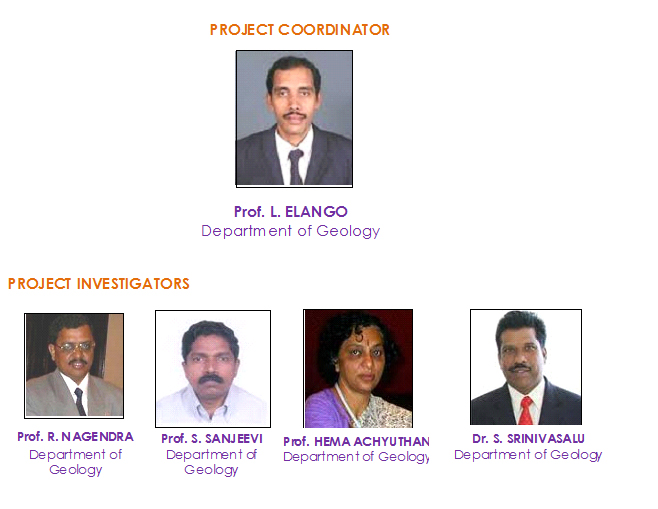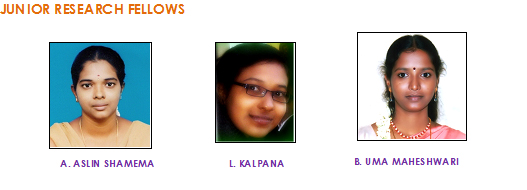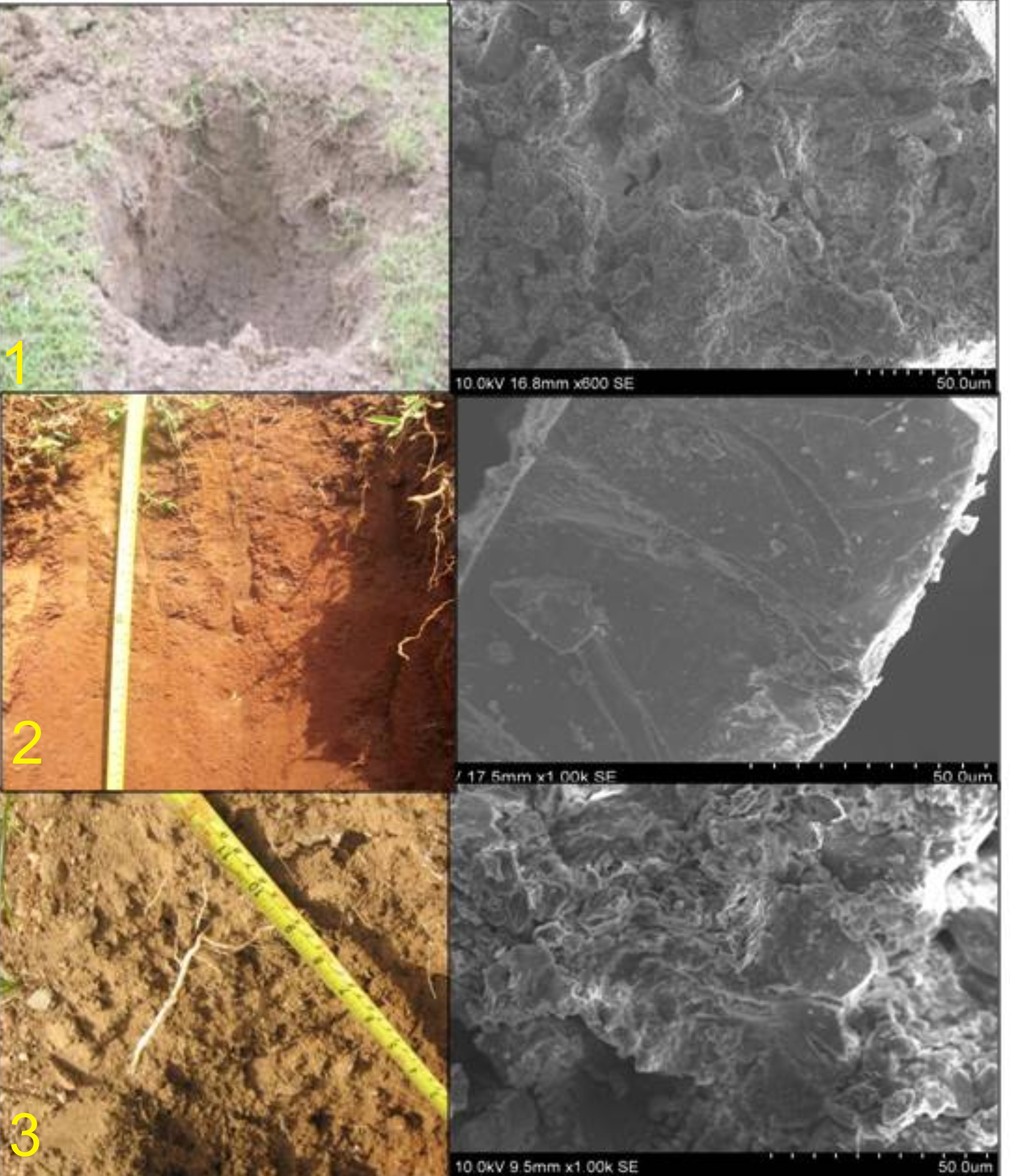Details
Assessment of inherent toxicity of certain rocks and its impact on environment
Rocks are made of various minerals and are different in different rock
types. In contact with the atmosphere, rocks disintegrate and degrade by natural
agencies like wind and water and forms soil. Both rock and soil plays important
role in groundwater quality as rainwater percolates through soil and rock and
reaches the aquifer. Calcium, Magnesium, Fluoride. Etc are some of the
important ions in groundwater but intake of them above permissible limits as
suggested by BIS, 1992 results in health risks like kidney stones and fluorosis.
A plant growing in a place which is rich in such ions in mineral composition of
rock and soil absorbs them and enters the food chain. Intake of fruits,
vegetables and pulses bearing large amount of calcium and fluoride leads to
health defects in human and other living beings. Thus the impact of rock on
human health by different ways must be studied and measures must be taken.
The project emphasizes on the impact of rock and soil on water quality and
the integrated effect on human health, at Pambar River Sub-Basin, Northwest
Tamil Nadu.
And so the specified objectives
are
·
To investigate the relationship between the geological
processes and the diversity and uptake of toxic elements by flora.
·
To quantify the rate and path of transport of the toxic
substances from the rocks to the biological environment and its impact on
ecosystem and
biodiversity.
·
To analyze the impact on human health of toxic substances
in particular with crystal deposition diseases.
·
To identify suitable methods to treat soil and
water contamination by toxic elements.
RESPONSIBILITIES OF THE INVESTIGATORS
1.
Dr. L. Elango – Geochemical characterization of
groundwater, groundwater quality assessment and its relation to rock/sediment.
2.
Dr. R. Nagendra - Sedimentological and mineralogical
studies of fluvial deposits, identification of toxic element bearing minerals in
fluvial deposits.
3.
Dr. S. Sanjeevi - Thematic mapping using satellite data,
studying the major shear zones, intensity of weathering.
4.
Hema Achyuthan - Soil micro-morphology and soil
formation, soil characteristics which is responsible for the release of toxic
substances geochemistry. Modeling of transport
processes through groundwater and
Overall co-ordination.
5.
Dr. S. Srinivasalu - Mineralogy of the rocks, and
geochemical characters of the rocks and soil to identify the source minerals of
toxic elements.
6.
Dr. S. Narayana Kalkura – Characterization of
pathological stones of humans, identification of sources.
7.
Dr. K. Palanivelu - Identifying suitable methods of
treatment of contaminated water/soil.
8.
Dr. V. Murugesan – Methods of treatment of water
contaminated by Fluoride and Arsenate.
9.
Dr. R. Ramesh – Characterization of organic and inorganic
constituents in Sediments.
EXPECTED MAJOR OUTCOME
The study will help to identify the impact of inherent toxicity in the
rocks on environment. Its impact on sediments, soil and water will be brought
out. Further, the presence of toxic elements in rocks/soil/water and its impact
on human health, particularly with kidney stones and fluorosis will be
understood. In order to minimize the impact of inherent toxicity on human
health, cost effective methods of treatment of contaminated water will be
suggested.
LITHOSPHERE – ROCKS
1. APATITE
Apatite is widely distributed in all rock types; igneous, sedimentary and
metamorphic, but is usually just small disseminated grains or cryptocrystalline
fragments. Large well formed crystals though can be found in certain contact
metamorphic rocks. Bands of apatite occur in Sevattur carbonatite complex.
Apatite is fluorapatite as generally is the case with carbonatite apatites. In
paragenetic sequence it is later than pyrochlore and iron oxides and carbonates.
Lens shaped bodies or bands of apatite ± magnetite ± olivine are present in
Sevattur. Soils upto 2.4% of apatite has been found due to weathering of the
carbonatite body.
2. VERMICULITE
Near
Sevattur, vermiculite occurs in the northern part of a pyroxenite band,
traversed by carbonatite. The vermiculite bearing ultrabasic rocks are seen on a
small high ground, situated about a mile to the east of Kagankarai Railway
station. The entire area occupied by the ultrabasic rocks is covered by a black
colored soil which is the only indication of the underlying ultrabasic rocks.
The mineral, which occurs as pods and lenses, shows an exfoliation index upto 15
times the original volume when heated to 850ºC. A total reserve of 1.93 lakh
tonnes has been estimated upto a depth of 9 m.
3. MAGNETITE
Magnetite and hematite are the main iron oxide minerals presence in
various sizes. Weathering of these magnetite occurring along the stream courses.
The magnetite has probably been formed as skarn mineral due to the intrusion of
granitic rocks. In Sevattur many magnetite rich pockets have been found either
alone or along with apatite. In some carbonatite rocks they are found as
clusters within the rock.
4. DUNITE/SERPENTINIZED DUNITE
The aqueous alteration of ultramafic rocks shows the serpentinization in
Onnakkarai Carbonatite Complex.
5. KANKAR
In Kankar, calcium carbonate is formed as nodules in soils of semi-arid
regions. Dunite is the core of this kankar – Kanjanur dunite.
6. CARBONATITE
In
Sevattur carbonatites are primary type, contains predominantly of coarse grained
carbonate grains. The Sevattur carbonatite occurs as an inwardly dipping arcuate
body sandwiched between a large syenitic stock and pyroxenite near village
Sevattur as ring dykes and veins amidst syenites, pegmatites and aplites, as
cavity fillings, breccia and diatremes within some contact metasomatic
carbonaceous rocks. During the weathering process the calcite is forms the
typical dark brown color soil.
1.
Clay - shows chemical etching and long resistance time under water, may be
below the water table.
2.
Sand – attrition and abrasion indicating transportation. No/little
chemical weathering and the mineral’s
angular structure indicating low
intensity/ short transportation. Probably it is a debris flow deposit.
3.
Clay - shows high intensity of chemical etching and so it has undergone
both oxic and anoxic conditions.
Rainwater is pure
until it reaches the ground surface. After falling on the surface and while
percolates through unsaturated zone before reaching the water table, the water
concentration gets changed. The extent of modification depends on factors like
the type of rock that forms the aquifer system, depth of the wells, circulation
time of water in aquifer, and climatic conditions of the area. These results in
higher concentration of some major, minor and trace ions in groundwater which in
turn becomes contaminated in terms of such ions. Even though some ions like
calcium, magnesium and fluoride are important they are toxic when present above
acceptable limits. The water becomes hard on increased amount of calcium and
magnesium. Hard water reduces the efficiency of water for domestic purposes as
that retards the formation of foams in soaps and detergents. When groundwater
becomes the drinking source of an area such ions enter into the food chain and
results in health risks like development of kidney stones. Fluoride is one of
the essential ions in groundwater and it helps in the strengthening of bones and
teeth but prolonged exposure of excess fluoride causes dental and skeletal
fluorosis. The water present in the study area are hard to very hard in nature
and are higher in fluoride concentration of up to 4.4 mg/l where 0.6 to 1.5 is
the permissible range for fluoride to be present in drinking water.
·
Kidneys are largely responsible for the regulation of water, electrolyte
and acid-base balance in the body.
·
Urinary stone diseases which is also known as renal calculi causes from
various factors such as metabolic abnormalities, bacterial infection, low urine
volume, intake of water and environmental factors. Kidney stones may contain
various combinations of chemicals.
·
The most common type of stone contains calcium in combination with either
oxalate or phosphate.
·
This is a commonly occurring disease affecting around 1 -20% of the
population in Asia, 12% in India, 13% in North America and 5- 9% in Europe.
CALCIUM OXALATE
Calcium oxalate
stone shows the micro-Spherule and crystalline layer in the nucleus and platy
morphology in the core region
URIC ACID
The Uric acid stone
shows the layered pattern arrangement in the outer layer and fibrous growth
morphology in the core region.
STRUVITE STONE




 LITHOSPHERE – SOILS
LITHOSPHERE – SOILS
 HYDROSPHERE – GROUNDWATER
HYDROSPHERE – GROUNDWATER